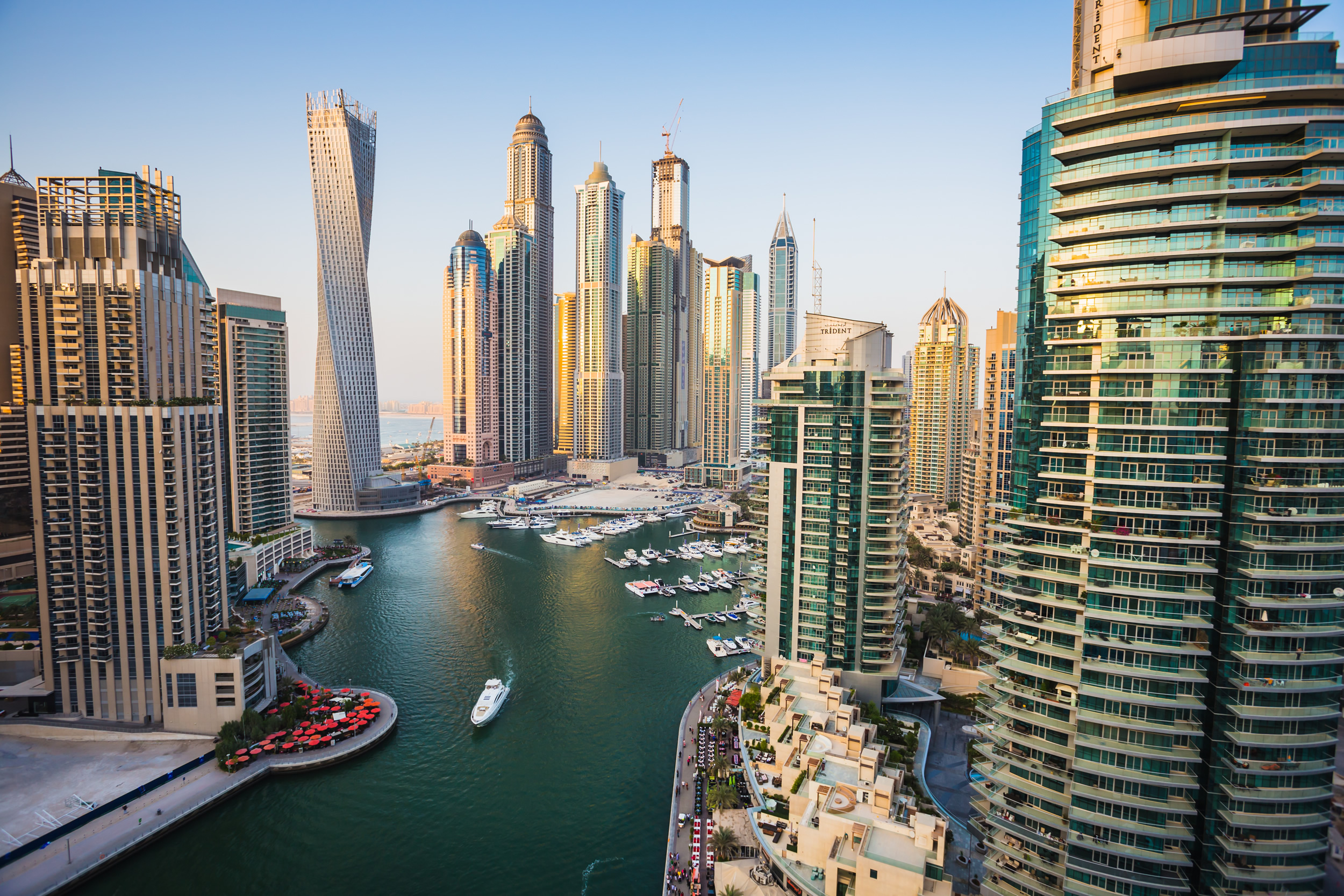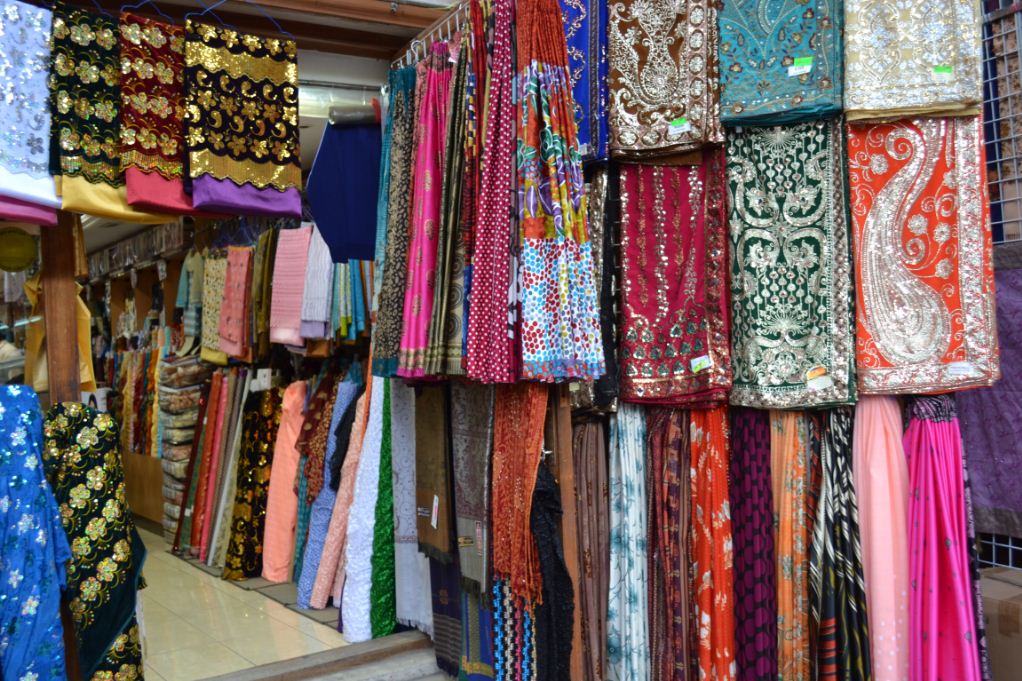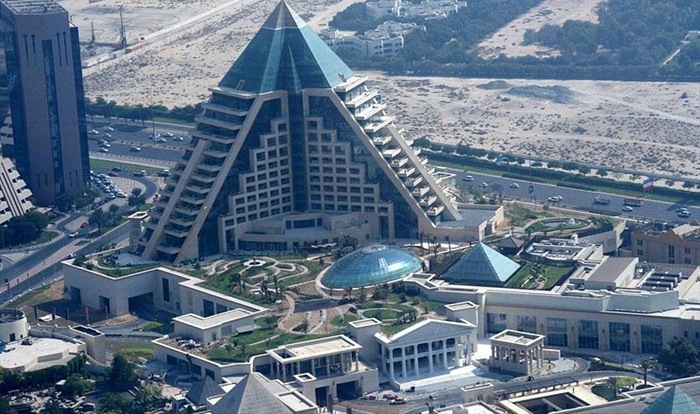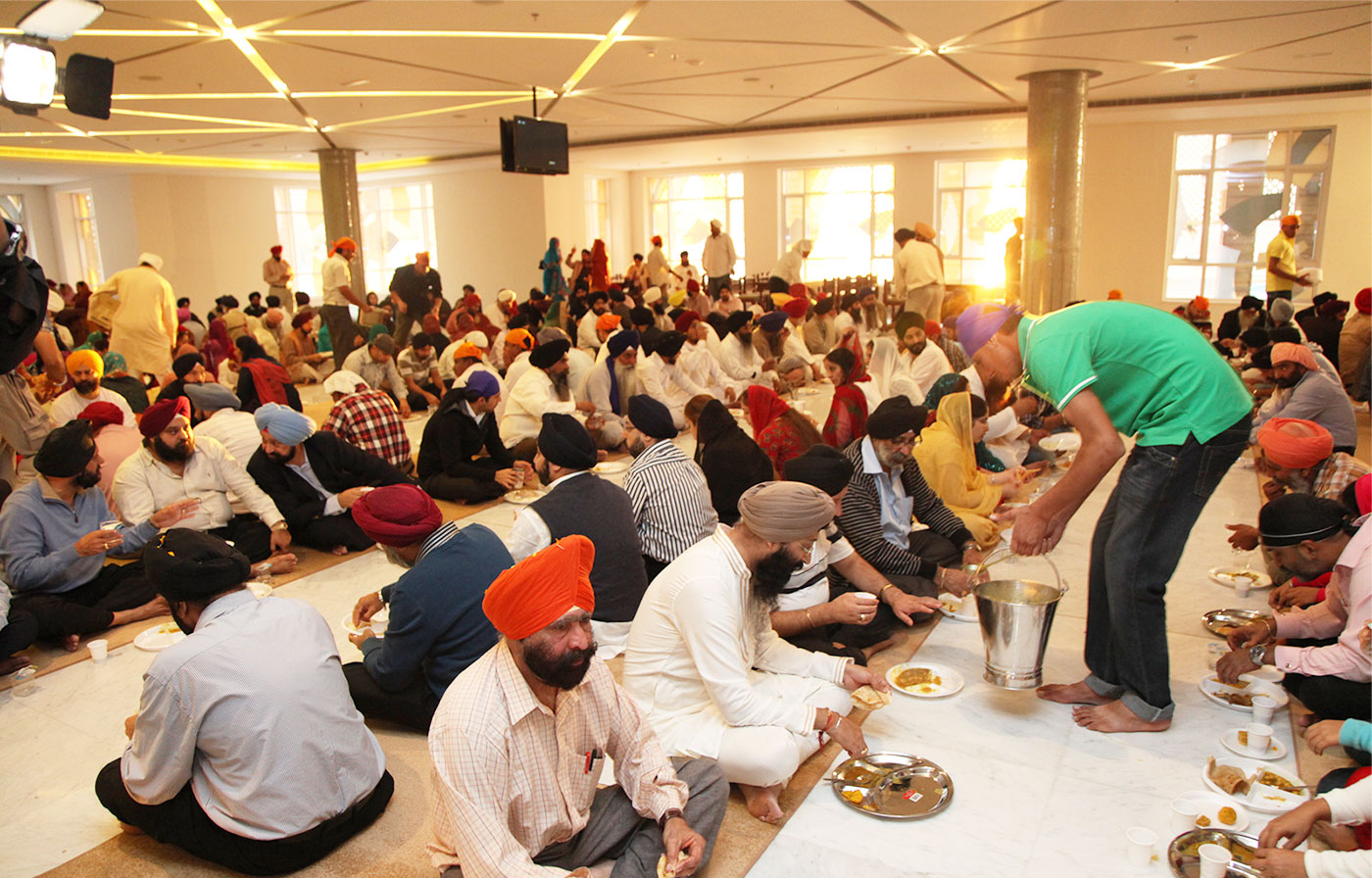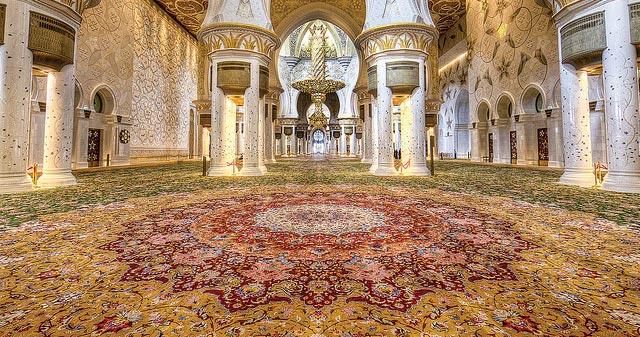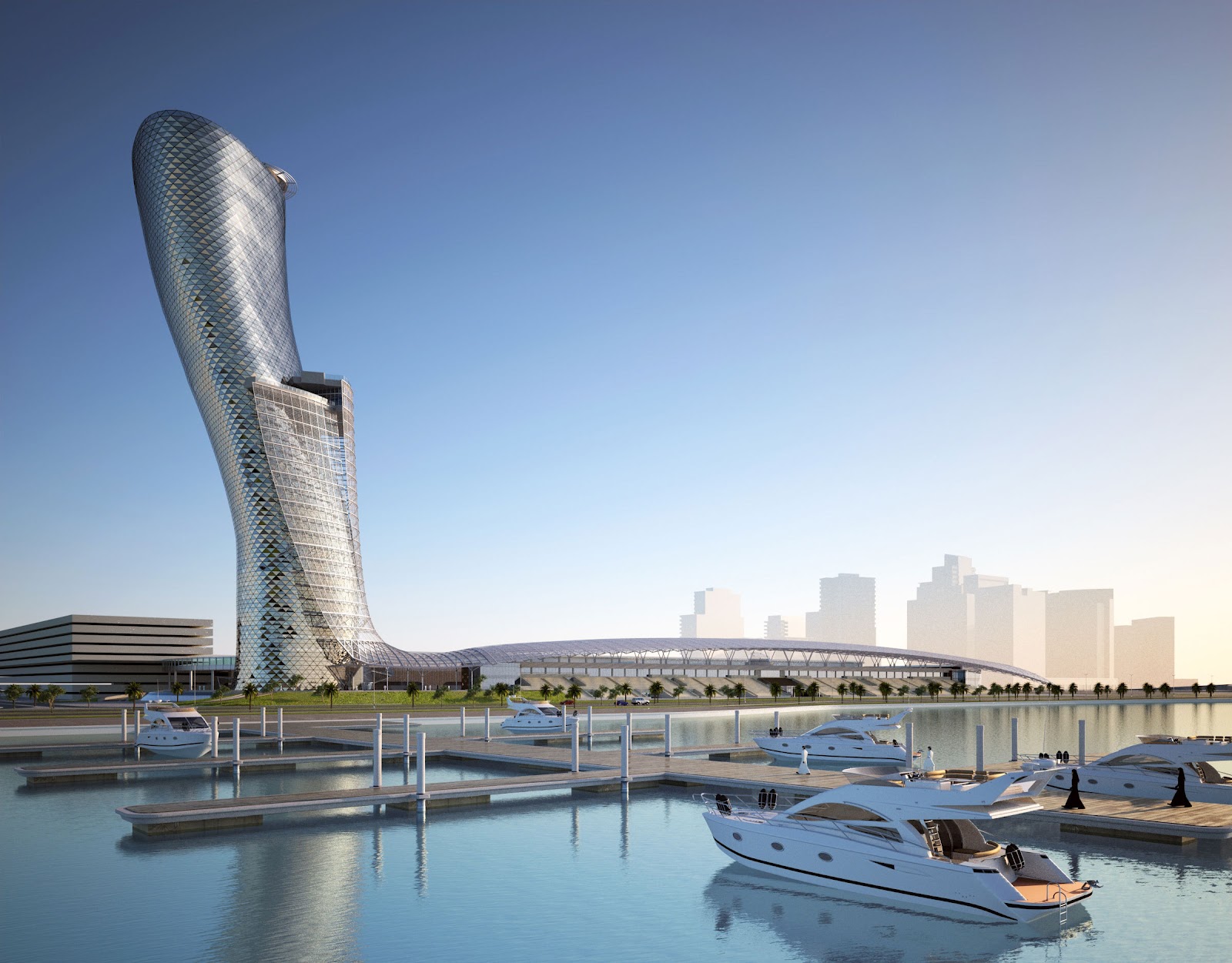UAE – November 18-27, December 4-5, 8-14, 2015
For most people, the United Arab Emirates (UAE) means just one place: Dubai, the sci-fi-esque city of iconic skyscrapers, palm-shaped islands, city-sized malls, indoor ski slopes and beach resorts. But beyond the glitter is a diverse mosaic of six more emirates, each with its own character and allure.
An hour’s drive south, oil-rich Abu Dhabi, the country’s capital, is quickly gaining a reputation as a hub of culture, sport and leisure. Beyond its borders looms the vast Al Gharbia desert, whose silence is interrupted only by shifting dunes.
North of Dubai, Sharjah has the country’s best museums, while tiny Ajman and Umm Al Quwain show life in the pre-oil days, and Ras Al Khaimah is busy building up its tourism infrastructure. For the best swimming and diving, head to the emirate of Fujairah and the clear waters of the Gulf of Oman.”
Capital. Abu Dhabi
Population. 7.9 million. Only 18% are natives, the rest are immigrant workers.
Money. UAE dirham (Dh). 3.66 to the US$ in November 2015. ATMs are everywhere.
Visa. For most Western travellers, it is a free 30-day visa on arrival.
TIPS
1. Book Burj Khalifa at www.atthetop.ae at least a few days ahead of time to get the best time. Realize it takes 45 minutes to get from the Dubai Mall entrance to the observation deck. My plan was to arrive in the daylight at the end of the day and stay till dark but arrived in the dark because of all the time delays.
2. Accommodation is not cheap anywhere. I stayed in the Dubai Youth Hostel, relatively cheap, great breakfast and close to a Metro station. I tried to couch surf but was unsuccessful in finding a host despite many attempts.
I flew from Bishkek, Kyrgyzstan via Astana, Kazakhstan to Dubai. The airline was Air Astana and the flight was a very economical US$210 – both flights were half full and total flying time was just over 7½ hours. The service and food were second to none. It is easy to transit Kazakhstan airports as no visa is necessary, but have tenge in order to eat from the poor selection in the Astana airport or bring food. It was quite a temperature change – -17°C in Astana, +28 in Dubai.
Dubai International Airport is massive. I have never walked so far to exit. Canada is visa-free even though the dated Lonely Planet said a visa was required. I decided to walk from the airport to the hostel (it said it was an option), but that was a poor choice, especially as the metro would have been easy. I simply wanted some exercise, but became hopelessly lost and almost died trying to cross a freeway. Dubai is not made for pedestrians. My Lonely Planet map was on my computer; it is so much less convenient than the paper edition. Luckily a nice Indian fellow finally gave me a ride. One might think you were in India as the only people you see anywhere are South Asian. And if you want help, ask them – they give great accurate information and are very sweet people.
I stayed at the Dubai Youth Hostel. Despite being heavily slagged in reviews, it is a very reasonable and inexpensive (US$28-35 in a four-bed dorm) choice for Dubai. It was clean, the air conditioning worked, the buffet breakfast was superb and the desk staff helpful, but this is more of a lodging for Asian men. Internet is charged for. I came here as I had to make a decision about where to send my credit and debit cards and this seemed the most reasonable at the time. Close to the hostel is a large mall with a Western Union, a packed Indian restaurant and the best McDonalds in the world down the street. I easily got my money transfer from my lovely son Eric.
DUBAI (pop 2.1 million)
Everyone flies here – the aerial view is variable but always interesting: skyscrapers that sprout across a desert hemmed in by a coastline with constructed archipelagos. From the world’s tallest building, skiing in the desert, islands shaped like the entire world and the world’s largest shopping malls
Under the leadership of Sheikh Mohammed bin Rashid Al Maktoum, Dubai has become a centre of finance, tourism and trade – much based on its income tax-free status. But the expense of living here including property taxes makes it not so attractive.
For visitors, Dubai is an exciting place to visit, with lovely beaches, sophisticated restaurants and bars, world-class shopping, ultra-luxe hotels, and awe-inspiring architecture, including, of course, the Burj Khalifa, the world’s tallest building.
Dubai’s heritage is still strongly rooted in Islam and generations of Bedouin heritage.
Dubai is an ultramodern city – there is nothing here over 50 years of age. Spread along the west coast of UAE for many kilometres, it is basically a city of freeways, low-rises, and mosques with high minarets and desert-adapted trees and palms. There are concentrations of high rises downtown around the Burj Khalifa and Dubai Mall and around Dubai Marina/Creek. All are architectural wonders clad in reflective glass and stainless steel. Even the “historical districts” look brand-new.
In the neighbourhood, where I am staying and on the metro, it is interesting to pick out nationalities. These are all guesses but 90% appear Indian, Pakistani, Bangladeshi or Filipino, and the rest are a smattering of African, Chinese, tourist and the least common, Arab. At Dubai Mall, besides the workers, 80% are Western tourists, 15% South Asian tourists and 5% are Arabs dressed in their flowing white kaftans and headgear (they are the only ones in the unbelievably swank restaurants in the domed atrium). Arab women are all in black and many had a full burqa. I asked a worker in a store (who was obviously Filipino), how many of the people who worked in the mall were Filipino – she said 70% – they are very courteous people.
Getting Around. The RTA sells refillable cards usable on the metro and buses. Rides are 3-6 Dh depending on distance. Both buses and the metro are sex selected with the fronts for women and children only. Dubai is huge and the metro a superb way to get around on the two lines. The buses are complicated and slow with the heavy traffic but maps of routes are available online.
As I was about to enter the metro, I met a Canadian guy my age, who was hopelessly lost. He is a lawyer whose job is to extradite criminals back to Canada. He has travelled all over the world, but is always on business and has seen few tourist sites. He had never ridden a metro before and found it very confusing, wandered off and lost his wife. He usually travels with 6-armed RCMP officers and only takes chauffeured vehicles. He had many interesting stories. He and his wife were walking in a neighbourhood and inadvertently crossed into an area restricted to women and children – they were hauled off to the police station and forced to pay a 100 Dh fine.
Dubai is a city amazingly short on true tourist sites. They could all be seen in a long day using the Metro and some walking.
Dubai Marina/Creek. Dubai Creek (Khor Dubai) is a saltwater creek that previously extended to Ras Al Khor Wildlife Sanctuary but as part of the new Dubai canal, now extends through to the Persian Gulf. Some sources say that the creek extended as far inland as Al Ain, and that the Ancient Greeks called it River Zara.
With 7kms of waterside walkways, huge skyscrapers, hotel row, restaurants, shopping and a public beach, this is a nice place to stroll.
One spectacular building under construction is Cayan Towers, a twisting skyscraper.
The Dubai Creek Cablecar runs sporadically now. I took it through the park along the waterfront to the start of Palm Island.
Shindagha Heritage Area. The Shindagha waterfront, in the crook of the creek, is one of the most historic areas in Dubai, with origins in the 1860s. It gained in importance when the ruling family relocated here in 1896. Many of the historic structures have been rebuilt and now house small museums. A paved walkway with a few cafes parallels the waterfront and is popular with strollers and joggers. It has been so completely restored it appears brand-new and sterile.
Sheikh Saeed al-Maktoum House. In Shindagha, this is a historic building and former residential quarters of the former ruler of Dubai. The building is now a museum that contains artifacts and images of the old town of Dubai. You could enter the court but the house itself was not open.
Elite Residence is a skyscraper between Dubai Creek and Palm Jumeirah – 380.5 metres (1,248 ft) tall and 91 floors – 76 are for 695 apartments and the other 15 have car-parking, swimming pools, spas, reception areas, health clubs, a business centre and a gymnasium. The tower was the third tallest residential building in the world when completed in January 21, 2012, becoming the fourth tallest after the completion of 432 Park Avenue.
Palm Jumeirah. This artificial archipelago extends into the Persian Gulf, part of a larger series of developments called the Palm Islands, including Palm Jebel Ali and Palm Deira, which, when completed, will together increase Dubai’s shoreline by a total of 520 kilometres. Construction began in 2001 with the first residential units available in 2006. It is the world’s largest artificial island and has at least 21 hotels, resorts, and hotel residences including the Atlantis, 7 retail malls, and 4,500 residential units, comprising 2,000 villas. By preventing natural tidal movement, the seawater within the Palm became stagnant so gaps were added. Marine life benefited as well.
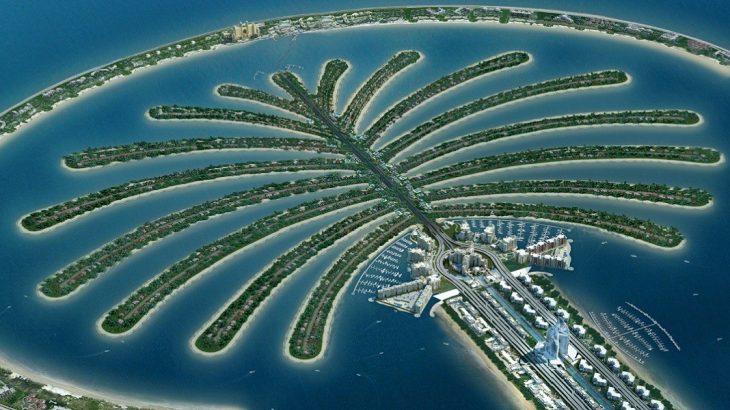
Burj Khalifa. The impressive elegantly tapered Burj Khalifa is a groundbreaking feat of architecture and engineering: the world’s newest tallest building pierces the sky at 828m. It opened in January 2010, only six years after excavations began. Up to 13,000 workers toiled day and night, at times putting up a new floor in as little as three days. It is a lovely building with many jutting-out sections and a progressive taper.

It has set many records: world’s tallest building – (Canton Tower 600m, Tokyo Skytree 634, Taipai 101 518m, Petronas Towers 475m); highest unsupported tower (CN Tower Toronto Canada 553m), highest occupied floor, height to architectural top, height to tip 820m or 2716.5 feet – the mast made of steel adds 250m (KVLY TV Blanchart Tower North Dakota 628.8m), highest pumped concrete 606m, highest elevator 140 floors.
The 26,000 windows take 40 workers three months to clean. 57 elevators travel 9m/second. Condensation from the air conditioning system is used to water all grass and plants. Inside this self-proclaimed ‘vertical city’, the floors are Armani Hotel to level 5, apartments 6-16, residences 16-72, luxury residences 78-108, boutique offices 112-154, Atmosphere Restaurant 122, observation decks 124, 125 and 145, and communication 156-159.
My ticket was to the Observation Deck on the 124th floor. Tickets need to be booked online at www.atthetop.ae – usually at least a few days before to get the cheapest or best times. My 5:30 pm ticket was 205 Dh (US$56, 75 additional Dh for 5-7 pm and 400 Dh for ‘instant’ unbooked tickets). You walk about 1½kms on moving walkways from the Metro to get to the mall and Burj. The huge lineups take at least 45 minutes to get to the observation deck (the same to exit). I had hoped to see sunset but arrived on top too late. I saw one show of the Dubai Water Fountain from the top – nice.
Dubai Mall. “The ‘mother of all malls” is much more than the sum of its 1200 stores: it’s a family entertainment centre. Kid magnets include the Dubai Aquarium & Underwater Zoo, the interactive KidZania miniature city and an Olympic-size ice rink (closed so I couldn’t show off my skills).
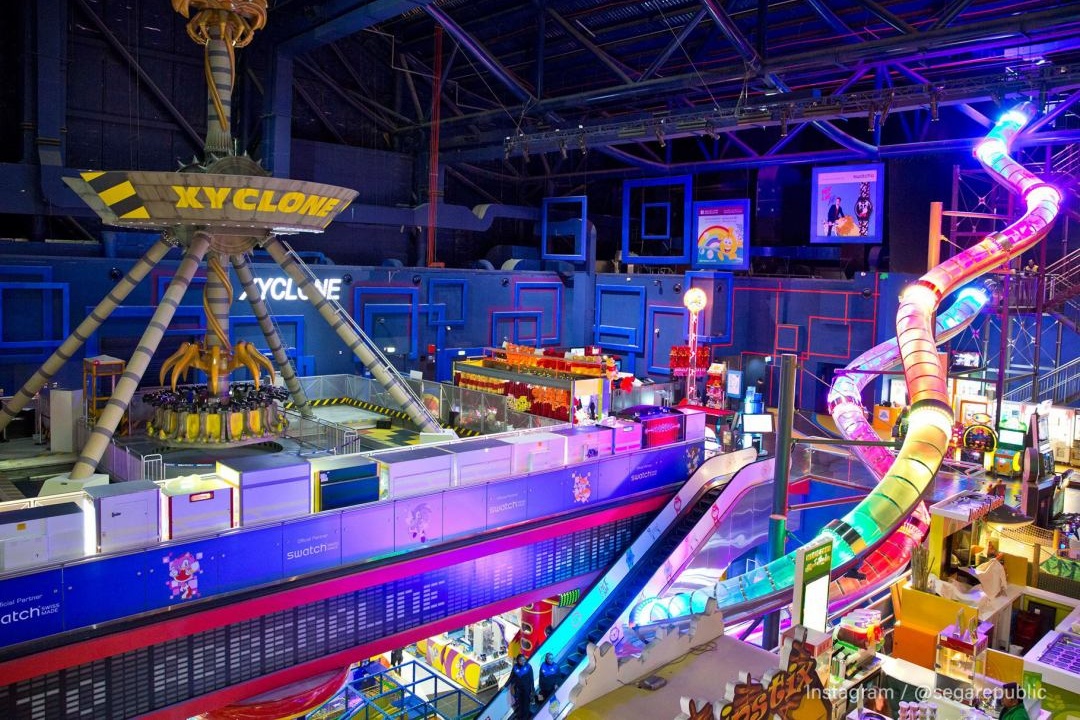
Sega Republic indoor amusement park
There’s also a dramatically lit four-storey waterfall.
:max_bytes(150000):strip_icc()/GettyImages-538737347-5b3fa502c9e77c00547605ea.jpg)
The food court is excellent but expensive, and numerous cafes and restaurants provide front-row views of Dubai Fountain. This place even has a Tim Hortons and the staff didn’t blink when I ordered a double/double.
One advantage of such a huge mall is when your girlfriend/wife finds something she wants to buy, suggest that she keep looking. She will never find that first store again. Prices are high.
Dubai Fountain. These choreographed dancing fountains are spectacularly set against the backdrop of the glittering Burj Khalifa. Water undulates, arcs and surges as high as 150m to soundtracks gathered from around the world. Each show lasts about 10 minutes with long waiting times between shows. I think the fountains at Bellagio in Las Vegas are better. I saw the show from the 124th floor of Burj Khalifa and again at ground level.
Cloth, Spice and Gold (Deira) Souk. On the way to the Dubai Museum and Historical neighbourhood, you walked through these modern markets. “Hello, professor. Cashmere? T-shirt? What do you want?” I answered “Nothing” and he said, “I have nothing too.” They were willing to sell anything.
Dubai Museum. Housed in the 1787 Al Fahidi fort, the one-time seat of government and residence of Dubai’s rulers is now a low-key museum that explores Dubai’s history, culture and traditions. Beyond a slick multimedia presentation charting Dubai’s exponential growth from a tiny trading post to a megalopolis, endearing freeze-frame dioramas recreate scenes from old Dubai, including a souq, a school and a Bedouin desert camp. This is an excellent museum.
Al Fahidi Historical Neighbourhood. Even though this is a “historical area”, it looks brand new and sterile with few people here. Its labyrinthine lanes have many restored wind-tower houses built a century ago by Persian pearl and textile merchants. Today, no one lives here and buildings house cultural offices, small museums, craft shops and galleries. The mosque had a pretty mihrab. There’s also a short original section of old Dubai’s city wall from around 1800. The compact area is easily explored on an aimless wander. The Coffee Museum is here.
Mall of the Emirates. Another giant mall, but with only 550 stores, it is laid out in a grid, has a better food court and is much easier to navigate than Dubai Mall. It has a 400m long (not high) ski hill that can be best seen from inside TGI Fridays. The prices in these malls are exorbitant.
Jumeirah Mosque. This architecturally stunning mosque is the only one in Dubai that’s open to non-Muslims, but only during guided tours offered through the Sheikh Mohammed Centre for Cultural Understanding. Built in 1979, the inside is wonderful. An introduction to Islamic religion and culture is followed by a Q&A session and was superb. She considered ISIS to not be Muslim.


We took 40 minutes to walk from the nearest metro through barricaded streets. I took the bus back to the metro and could have walked there faster, the traffic is so horrendous in Dubai.
Burj Al Arab. An architectural icon and symbol of modern Dubai, this sail-shaped hotel sits on an artificial island and is well worth a visit if only to gawk at an interior that’s every bit as gaudy as the exterior is gorgeous. The lobby is ringed by pillars sheathed in gold leaf and tall enough to fit the Statue of Liberty, but it is not possible to go inside.
WAFI is a mixed-use complex: a mall, hotel, restaurants, residences, and a nightclub. The “city” is styled after Ancient Egypt with columns of Karnak, small pyramids, and images of pharaohs all in light brown stone.
Al Farooq Omar Bin Al Khattab Mosque. Umar bin Al Khattab was a companion of the Prophet Mohammed who became the second Caliph and was given the title Al Farooq, The original mosque was established on the same site in 1986, renovated in 2003 and 2011, can now accommodate 2,000 making it one of the UAE’s largest mosques. In 2011, it was the third to open its doors to non-Muslims (Mosque of late Sheikh Zayed Bin Sultan Al Nahyan in Abu Dhabi and the Grand Mosque in Jumeirah.

Guru Nanak Darbar. Sikhism in the UAE has 50,000 followers, the majority in Dubai, expatriates from Punjab, India plus some Pakistani Sikhs. This Gurdwara in Jebel Ali serves over 10,000 worshippers, the first ‘official’ Sikh temple in the entire Gulf with the land given by Sheikh Mohammed bin Rashid Al Maktoum for the construction. The ‘langar’ or common kitchen hall serves 10,000 plus worshipers every Friday. Sikh children are taught Punjabi, ‘Kirtans’ and how to behave in places of worship.
I had to go to the courier company to pick up a credit card they were unable to deliver. A huge fire forced the metro to stop and we were bussed to Union Station on the other side of the fire. Hundreds of people needed the bus and we were crammed in like sardines, mostly nice Indian guys. I picked up the envelope and had to take 2 buses back to the hostel. The whole affair took 4 hours.
Rose Rayhaan by Rotana (Rose Tower) is a 72-storey, 333 m (1,093 ft) hotel on Sheikh Zayed Road. It was the world’s tallest hotel from 2009–2012. The highly embellished façade has blue and silver mirrored glass with gold rings stretching up the centre of the two convex cylindrical towers that fold into one another. The sections flatten towards the top to peak at intersecting petals, “The Rose” and then topped by a sphere and a spire. It is one of the first major hotel brands to open in Dubai as alcohol-free. The building has 462 rooms, suites and penthouses.
I did not go to these museums (Dubai Moving Image Museum and Pearl Museum) nor to the following but the buildings look unique.
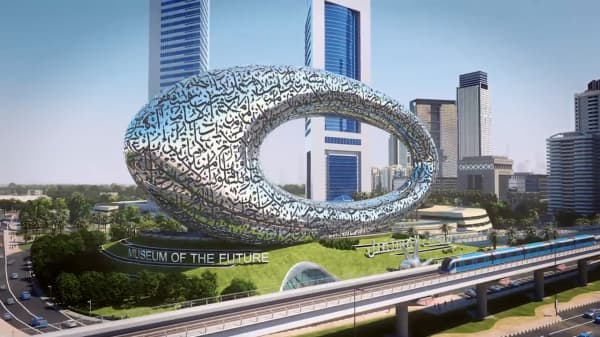
Museum of the Future
Etihad Museum. The history of the UAE.
ABU DHABI (pop 1.9 million)
Abu Dhabi has invested heavily in culture, education and environmental innovation in recent years. Slowly the largest – and wealthiest – emirate is emerging from the shadow of Dubai. On Saadiyat Island, starchitects are designing an entire cultural district that will include branches of the Louvre and the Guggenheim. Near the airport, construction of Masdar, the world’s first carbon-neutral city, is progressing. Elsewhere in town, futuristic skyscrapers are forever changing the skyline, most notably the disc-shaped HQ and the Gate Tower, a glass-and-steel behemoth that’s deliberately leaning 18 degrees (14 degrees more than the Tower of Pisa!). Already completed is the glorious Sheikh Zayed Grand Mosque, whose snowy white marble domes hover above the city like a mirage. Near the airport, Yas Island is a sparkling new tourist development headlined by the Ferrari World Abu Dhabi theme park and the spectacular Yas Hotel, which has a Formula 1 racetrack roaring through it.
Abu Dhabi is by far the largest emirate, comprising almost 87% of the country’s total area.
Looking at it only decades ago, it was little more than a fishing village with a fort, a few coral buildings and a smattering of barasti huts. To get a sense of the past, head to the enigmatic desert, peppered with oases such as Al Ain and Liwa. While the emirate may have become rich from what lies beneath, a strong connection to the desert and the sea is something that remains more important than petrodollars.
I came here on a day tour from Dubai (cost 250 Dh), the only practical way to see the spread-out sites.
Sheikh Zayed Grande Mosque. My favourite mosque in the world, this is a stunning grand edifice, the 7th largest mosque in the world with 80 domes and 4 – 107m high minarets with gold balconies. Constructed entirely of white Carrera marble from Italy, the only other colour is gold: the palm leaf capitals of the columns, window frames, the ball spires on each dome and chandeliers.
Pass by 2 large reflecting pools and enter a huge open area – all small marble mosaic inlaid with wonderful marble flowers.
All windows are double pane cut crystal glass with 5-sided stars etched on the inside. All columns have inlaid marble or mother-of-pearl flowers. The walls of the entrance are covered in bas-relief marble flowers.
Inside the main hall is the largest carpet in the world at 6,600 sq. m – made of silk/wool by 2,000 women taking 20 months. With a green background, it is a riot of flowers and round centres under each of the chandeliers, mirroring the chandeliers. The raised lines every 5’ that look like seams are the prayer lines like in any mosque. Made of 24-carat gold and red, green and gold crystal balls, the largest central chandelier weighs 12 tons. 20 groups of 4 solid marble columns support huge arches.
The mihrab is 24-carat gold in a dome shape. Surrounding the mihrab are the Arabic script of Allah and his 99 attributes.
Wahat Al Karama. This memorial, opposite the eastern side of the Grand Mosque, was inaugurated in 2016 in memory of Emiratis who have given their lives in service to the nation. The main monument, a leaning stack of 31 mammoth aluminum-clad tablets inscribed with poems and quotations from prominent UAE figureheads, sits in front of a Memorial Plaza fashioned from Turkish travertine stone centred around a shallow, circular pool which reflects both the panels and the Grand Mosque just across the busy highway.
Emirates Palace. You don’t have to check in to check out this over-the-top 5-star hotel. It was built at the cost of Dh11 billion – a boggling use of marble, gold and crystal (1002 Swarovski chandeliers!) throughout as well as the ATM that dispenses solid gold bars. With nearly 400 rooms and suites, 114 domes and a 1.3km private beach it is also colossal. Enjoy classic English afternoon tea (Dh225) or wander around the lobby ogling ancient art from China, Egypt, Africa, Greece and Rome on display at the world-renowned Barakat Gallery.
Across the road are the Jumeriah Ehibab Towers, three gleaming glass and stainless towers, shown in the ‘Fast and Furious” movie.
Capital Gate (Leaning Tower of Abu Dhabi), is a skyscraper over 160 meters (520 ft) tall, 35 stories high designed to incline 18° west. The inclination is achieved by an engineering technique, known as pre-cambering, that allows floor plates to be stacked vertically up to the 12th story and staggered, one over another, between 300 to 1,400 millimetres (12 to 55 in). The gravitational pressure caused by the 18° incline is countered by the pre-cambering, using a core of concrete reinforced with steel, with the core deliberately built slightly off-center. It is also anchored to the ground by 490 piles which are drilled 20 to 30 meters (66 to 98 ft) underground.
In 2010, Guinness World Records recognized Capital Gate Tower as the world’s “farthest manmade leaning building”, built to lean 18° west more than four times that of the Leaning Tower of Suurhusen. Capital Gate is one of only a handful of diagrid buildings in the world. Others include London’s 30 St Mary Axe (Gherkin), New York’s Hearst Tower, and Beijing’s National Stadium.
Abu Dhabi Corniche. One of the most pleasant developments in recent years is the expansion and extension of the waterfront Corniche, with its white sandy beaches and wide Mediterranean-style promenade. You can rent a sun bed and beach umbrella here; Fridays are the busiest. Shisha cafes are spread across the grassy verge next to the Corniche and are great for soaking up some local ambience. A great way to get around is by bicycle.
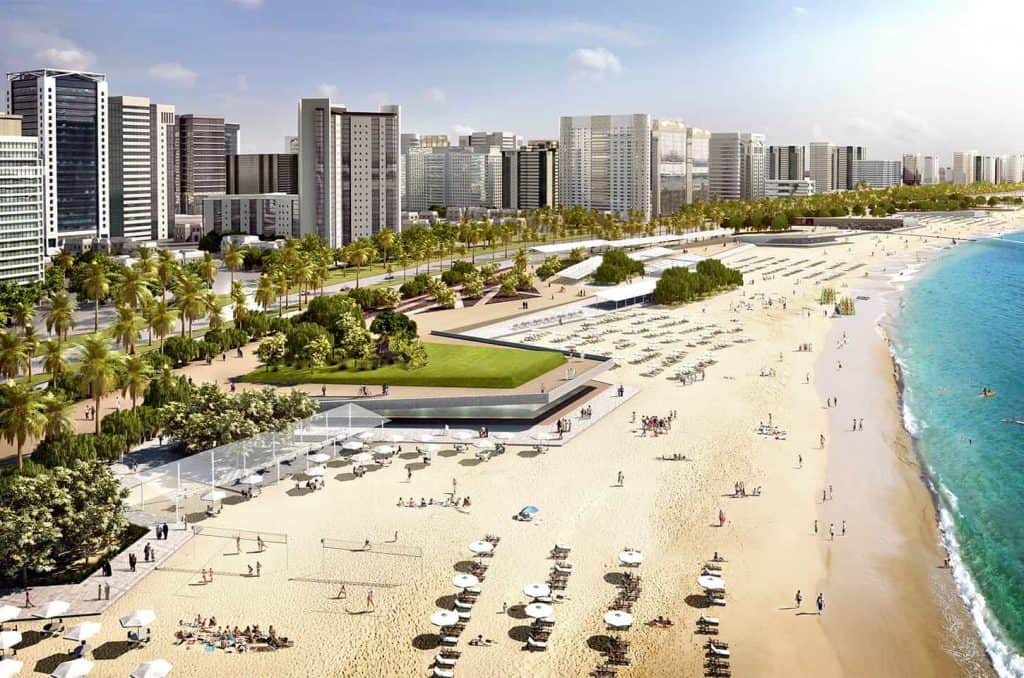
Abu Dhabi Heritage Village. This fortress-like compound lets you catch a glimpse of life in the pre-oil days, with a souq, mosque, barasti house and Bedouin encampment complete with goat-hair tents. Watch craftsmen at work and study displays of Bedouin jewellery, traditional clothing, cooking utensils, camel harnesses and equipment used by pearl divers and merchants. Not very interesting.
Al Maqtaa Fort. Despite being one of the oldest sights in Abu Dhabi, this 200-year-old guardian of the city was restored and then more or less abandoned after the visitors centre here closed. It is on a rocky island in Khor Al Maqta (canal) and is difficult to find.
Date Souk. Sample fresh dates or buy dates filled with everything imaginable or covered with chocolate.
Ferrari World Abu Dhabi. If you want bragging rights to having ‘done’ Formula Rossa, the world’s fastest rollercoaster (top speed 240km/h), visit this temple of torque and celebration of all things Ferrari in a spectacular building on Yas Island. Tamer diversions include a flume ride through a V12 engine, a motion simulator that lets you ride shotgun with a race car champion, and an imaginative 4D adventure. There’s also a somewhat saner rollercoaster that has you ‘race’ a Ferrari F430 Spider around the track. Between thrills, check out the car exhibitions or live shows.
The Landmark is a postmodern supertall skyscraper (2006-12), a mixed-use building at 324 metres (1,063 ft) tall with 72 floors above ground and five basement levels. It is the second tallest building in Abu Dhabi behind the Burj Mohammed bin Rashid in the Central Market Project World Trade Center complex.

Umm al-Nar is a Bronze Age culture from 2600-2000 BCE in the area of modern-day United Arab Emirates and Northern Oman. It lies adjacent to Abu Dhabi between a refinery and a sensitive military area so public access is currently restricted. It is noted for its circular tombs with well-fitted stones in the outer wall and multiple human remains within.
SHARJAH (pop 990,000)
This emirate just north of Dubai is unusual in that it has coasts on both the west and east sides of the peninsula. Given the Unesco nod in 1998 as the Arab Capital of Culture, its historic old town has souqs and museums. It takes its decency laws very seriously – no exposed knees, backs or bellies for both men and women. It’s also the only emirate that is ‘dry’ (ie no alcohol is available anywhere). Sharjah serves as a major bedroom community for Dubai – much cheaper to live and only 1 hour north. The bus from Dubai costs 10 Dh.
Aside from the main city of Sharjah, the enclaves of Dibba Al Hisn, Khor Fakkan and Kalba on the eastern coast also belong to the emirate.
Sharjah International Airport. 15km east of the centre is the hub of Air Arabia the region’s first budget airline.
Many of Sharjah’s top sights are scattered around the partly walled-in Heritage Area and the adjacent Arts Area, just off the Corniche.
Sharjah Heritage Museum. This museum has five galleries dealing with different aspects of local life, from living in the desert to religious values, birth and burial rituals to holiday celebrations, marriage and wedding ceremonies, and folk medicine. It is a good educational experience.
Sharjah Art Museum. Its galleries showcase contemporary art with guest artists.
Sharjah Museum of Islamic Civilization. Pretty much everything you always wanted to know about Islam is addressed in this well-curated museum in a converted souq right on the waterfront. The building is beautiful. The ground-floor galleries zero in on different aspects of the Islamic faith, such as the Five Pillars of Islam, including the ritual and importance of the haj. Other rooms trace Arab scientific accomplishments, especially in mathematics and astronomy, while the 4 galleries on the upper floor show 1400 years of Islamic art. The central dome has a striking deep-blue zodiac mosaic.
Al Noor Mosque.
King Faisal Mosque. Named after King Faisal of Saudi Arabia who financed it and was built by a Saudi architect, it opened in 1987, is the second largest in the UAE, has two 70m minarets and a capacity of 16,670.
Originally, I wanted to at least drive through these northern emirates from Sharjah (there is not much to see or do in any of them) on my way to the Musandam Peninsula, but arranging transportation in Musandam seemed impossible other than renting a car, so I decided to not go to any of them. The 45km drive from Khasab to Tibat sounded wonderful.
But I was eventually able to fly from Muscat, Oman to Khasab, couch surfed for one night and then was driven by my host to RAK, and let off to catch a bus to Dubai. I stopped for a few hours in each of the emirates.
AL AIN (pop 625,000)
With markets, forts, museums and a famous date palm oasis, Al Ain is a calm oasis after the frantic pace of Dubai and even Abu Dhabi, both about a two-hour drive away. On the border with Oman, the birthplace of Sheikh Zayed has greatly benefited from his patronage and passion for greening the desert, even garnering the moniker ‘Garden City’. But the desert is never far away: simply drive the winding road up Jebel Hafeet for sweeping views of the Empty Quarter. Al Ain has a couple of excellent museums, an archaeological park, a superb zoo and several ancient sites comprising a WHS.
Al Ain rubs up against the town of Buraimi across the Omani border. Those who are not citizens of the Gulf Cooperation Council (GCC) must use the Hili border crossing in northern Al Ain and take a short taxi ride to the centre from there. GCC citizens can use the more central Al Mudeef crossing.
Al Ain has no cheap accommodation. But I am travelling with a fellow Canadian from PEI who is my age and a pleasant companion. Sharing hotels makes them quite economical. We finally stayed at the very nice Top Hotel for 250Dh ($68.50) – less per person than Dubai Youth Hostel but without a good breakfast. There is an incredible selection of cheap Indian restaurants so food is very cheap.
We went to the lavish Al Ain Mall – 3 stories with hundreds of stores and a skating rink. There are many shops for women with jewellery and fancy clothes – but you wonder where they wear this stuff – you only see the women in black outfits usually with full face covering.
Al Ain Zoo. Wow, what a great zoo. The region’s largest and most acclaimed zoo, founded by Sheikh Zayed in 1968, has spacious enclosures inhabited by both indigenous and exotic species. Observe many indigenous Middle Eastern and African animals not seen in other zoos including Arabian oryx, Barbary sheep, Scimitar oryx, and blackbuck – all with the most amazing horns. There’s also an array of others – crocodiles, tigers, lions, giraffes, white rhinos and dozens of other species, some of them born at the zoo, that has a well-respected conservation and breeding program. I had an interesting interaction with a chimpanzee – we stood looking into each other’s eyes for a good 5 minutes separated by 2 feet and a glass panel.
I liked this zoo more than the San Diego Zoo. Though it doesn’t have a huge selection, the enclosures were spectacular. And we were there on a “free” day.
Al Ain Camel Market. Al Ain’s famous camel market is a wonderful immersion in traditional Arabic culture so rare in the UAE today. All sorts of camels are holed up in pens, from wobbly-legged babies that might grow up to be racers to imposing studs kept for breeding. The intense haggling is fun to watch. Trading takes place in the morning. It is easily reached by city bus to the Bawadi Mall. We immediately had a “guide” on arriving who insisted on taking tons of pictures and then demanded $30! There are also goats and sheep.
Al Ain has 3 Unesco World Heritage Sites (Al Ain Oasis, Hili Archaeological Park and Bida Bint Saud). These are possibly the least visited Unesco Sites in the world.
Al Ain Oasis. Many main paths lead through this 3000-acre date palm oasis, an atmospheric labyrinth of shaded walkways and cultivated plots irrigated by a traditional falaj (underground system of tunnels). You can also walk through the palms anywhere. There are nearly 150,000 date palms here, along with mango, almond, banana and fig trees (we didn’t see any of these, but the place is huge). Look for the ruins of an ancient fortress and a mosque as well as date storage containers, but the whole place was devoid of visitors and the only buildings were two mosques. One date palm produces 270kg of dates per year – dates are 60% sugar and 2% protein.
Al Jahili Fort was established in 1891 around the Al Jahili Oasis for the protection of palm farmers. The fort is in southern Al Ain, part of a public square. The fort is square 35 metres on a side, and 8 metres high, with three round watchtowers, and a rectangular watchtower on the northwestern corner. It was restored in the mid-1980s, 2007–2008.
Al Ain National Museum.
Hili Archaeological Park. After a long bus ride and walk, we arrived at a locked gate and nobody was visibly around. After yelling, the guy woke up and let us into the nicely landscaped park. This is the largest Bronze Age complex in the UAE dating back some 4000 years. The sites are minimal with foundations of a tower, mud brick buildings and the restored circular Grand Tomb. At 4 pm, the gates were unlocked and several families appeared to enjoy the lovely park and playground.
Ain al Faydah National Park is a small park on the outskirts of town used for falconry.
Sheikh Zayed Palace Museum. In the palace of the former UAE President (1918–2004) and his family. It was originally built in 1937 on the western side of the Al Ain Oasis, lived in until 1966 and was made into a museum in 1998. Many of the rooms are meeting rooms for receiving visitors and a replica grand court tent.
Qasr Al Muwaiji is a 65mx65m square enclosure with 2 square towers built in the early 20th century facing Al Muwaiji Oasis (both key components of the UNESCO World Heritage Site of Al Ain). It was used as a diwan (a council or seat of governance) and as a place for the community to congregate. In 1946, Sheikh Zayed bin Sultan Al Nahyan moved into the palace. The exhibition mainly focuses on the stories of HH Sheikh Khalifa bin Zayed Al Nahyan and the members of Abu Dhabi’s ruling family with a connection to Qasr Al Muwaiji.
On November 27, Shane and I crossed into Oman at the Hili border crossing to Buraimi, Oman. We took bus #900 out to the border.
On December 4, I returned from the Musandam Peninsula of Oman to RAK, the most northerly emirate, and took the bus through RAK, Umm Al Quwanim, and Ajman Emirates to Sharjah and then another bus to Fujairah Emirate.
RAS AL KHIMAH (pop 241,000)
Surrounded by the hazy Hajar Mountains, RAK is the UAE’s northernmost emirate. Its diverse scenery ranges from beaches, oases, and hot springs to the sun-baked desert, all backed by fierce mountains. There is a free-trade zone, luxury beachfront resorts, high-end residential area, and new leisure facilities, most some 15km south of RAK City.
National Museum of Ras Al Khaimah. In a 19th-century fort – the residence of the Qawassim rulers until 1964 – are a hodgepodge of tired ethnological displays.
Dhayah Fort is an 18th-century fortification, the highest hilltop fort in the UAE and in 1819 was the last bastion of local resistance to the British punitive expedition of 1819 which sacked Ras Al Khaimah, Rams and southern coastal settlements as far as Dubai. It was restored in 1990 and lacks a natural source of water.
Shamal. Atop a craggy mountain above the village of Shamal, some 5km northeast of RAK City, are the ruins of one of the UAE’s oldest archaeological sites, a mystery-shrouded fort called Sheba’s Palace. Built sometime between the 13th and 16th centuries, only a few stone walls and a badly ruined barrel-shaped building remain. The views from up here, though – stretching from sea to village to mountain – are superb.
RAK is the gateway to the spectacular Musandam Peninsula, an enclave of Oman via the Shams/Tibat border post about 35km north of RAK City. Beyond the border await a dramatic coastal drive and the town of Khasab, where you can catch dhow cruises and go snorkelling with dolphins. If eligible for a free tourist visa for the UAE, you won’t need to obtain a separate visa for Oman.
UMM AL QUWAIN (pop 56,000)
This tiny emirate is wrapped around an island-dotted lagoon, is in many ways the ‘anti-Dubai’ – small, sleepy and quaint. Visit the Umm Al Quwain Fort Museum for the history of the emirate.
Ed-Dur is an ancient coastal settlement overlooking Al Beidha Lake, the largest archaeological site in the emirates dug in 1974 with evidence of human habitation spanning the Ubeid period, Stone Age, Bronze Age, Iron Age, and Pre-Islamic period. During the latter period, the settlement appears to have been at its most prosperous and the hills of the were entirely covered with dozens of buildings and thousands of stone-built tombs. Some 500 of these tombs have been excavated, with grave goods discovered including drinking sets, Roman glass, weaponry, pottery, jewelry and ivory objects. It is thought some 20,000 tombs are on the site in all.
AJMAN (POP262,000)
North of Sharjah, Ajman is the smallest of the seven emirates. Although still comparatively laid back, it has also seen significant in recent years. For visitors, the main attraction is the pretty, palm-lined, white-sand beach while strolling along the Corniche.
Arriving late in the evening, I easily found the Fujairah Youth Hostel but they were full during the National Holiday, so hopped on another bus back to Dubai, arriving at my old “home” at Dubai Youth Hostel. After 2 nights, I flew to Doha, Qatar for two days to see a few interesting things and then returned to Dubai on December 8 to watch the Badminton World Superfinals for five days.
Back at the hostel, I talked to a Filipino woman here in Dubai looking for a new job. She lives in the far south of Abu Dhabi Emirate and wants to work in Dubai. She works in a beauty salon doing hair and makeup. Her customers are Arabs – they come in to have their hair washed and makeup (very heavy make-up) done once a week for the party held weekly. Like all expatriate workers, her contract is constantly breached – instead of 8-hour working days, 5 days per week, she works 12-hour days and only gets 3 days off per month and is not paid overtime. Her passport is held by her Arab employer and is only available to travel once every 2 years. If she were to quit, she would be banned from the country and the passport would only be returned to her in the departure lounge of the airport. She has no recourse but to finish her present contract, as she would be extradited if she didn’t. But things are much better with Skype as she is able to cheaply talk to her two children back in the Philippines every day and is actively involved in their lives. She makes 6000 Dh (US$1645) per month, which she bills in two working days. She was a lovely intelligent woman, great fun to talk to.
Promises are made by the employers but none are kept. The UAE government is always promising to improve the working conditions of expatriate workers, especially the law allowing banning which is so restrictive and allows all the abuses to continue. But it has not happened yet.
Even though no income tax is paid in the UAE, fees make up for the tax-free status. 5% is charged on all accommodation. There are fees for every document. And businesses must have a 51% Arab partner. But this can be gotten around by setting up a business in a duty-free area. I talked to an English fellow living in Ukraine who had set up a business to avoid British taxes. After a steep learning curve, he had jumped through all the hoops. A German man living here for many years told me that there is no social interaction with Arabs. He had no use for any of them and found them arrogant, uneducated, uninteresting people with nothing to offer socially.
Whole classes of school kids were watching the badminton. I sat behind a group from an all-Indian private school, the children of middle-class Indians with good education and good jobs. None of the kids watched any badminton but talked and spent all their time on screens. Tuition was 35,000 Dh per year (US$10,000). These kids and their families are privileged and live a “nice” life here in Dubai, with a much better standard of living and opportunity than back in India.
BADMINTON WORLD SUPERFINALS December 9-13
The best players in the world compete in 12 tournaments throughout the year to qualify for the Superfinals held in Dubai. The top eight players in men’s and women’s singles and men’s, women’s and mixed doubles then play in the finals. The tournament is held at the Haraman Sports Complex, a gorgeous venue far out in the desert, a 45-minute bus ride from the nearest metro station. Its main feature is two Olympic-sized swimming pools – the courts are on place over the pools. Free shuttles are available on the hour. So I watched some incredible badminton for five days. Besides Asian countries (Japan, Indonesia, Malaysia, China, Korea, Hong Kong, India) the only other countries represented are Denmark with qualifiers in all the five events, England with a mixed doubles and a Spanish woman singles player. the finals were won by Japan (men’s and women’s singles), China (women’s doubles), Indonesia (men’s doubles) and England (mixed doubles). It was great badminton.
There was a great bonus to being there. Table tennis was available outside and there were two professionals there. They were amazing to watch. I had great lessons and my play improved 1000%. It is all technique.
SUMMARY OF UAE
I visited all 7 emirates. The highlights were the mosque in Abu Dhabi, Burj Kalifa, the Jumeirah Mosque Tour, the badminton world finals in Dubai and the Al Ain Zoo. Of course, it was interesting to see all the amazing architecture in every city. But if not into shopping, beaches or nightclubs, there is not much to see here. And it is all quite expensive. I very much enjoyed Dubai Youth Hostel, the cheapest accommodation in the city and met some great fellow travellers.
It was also interesting to gain an understanding of Arab culture with the “women in black” and the dreadful way the majority of the expatriate population is treated – those primarily from India, Pakistan and the Philippines, without whom, this society would grind to a halt. It certainly does not seem to be a sustainable business model.
